This story from the Australian Aviation archives is from June 2019, when John Walton wrote about the Airbus A220 family of aircraft.
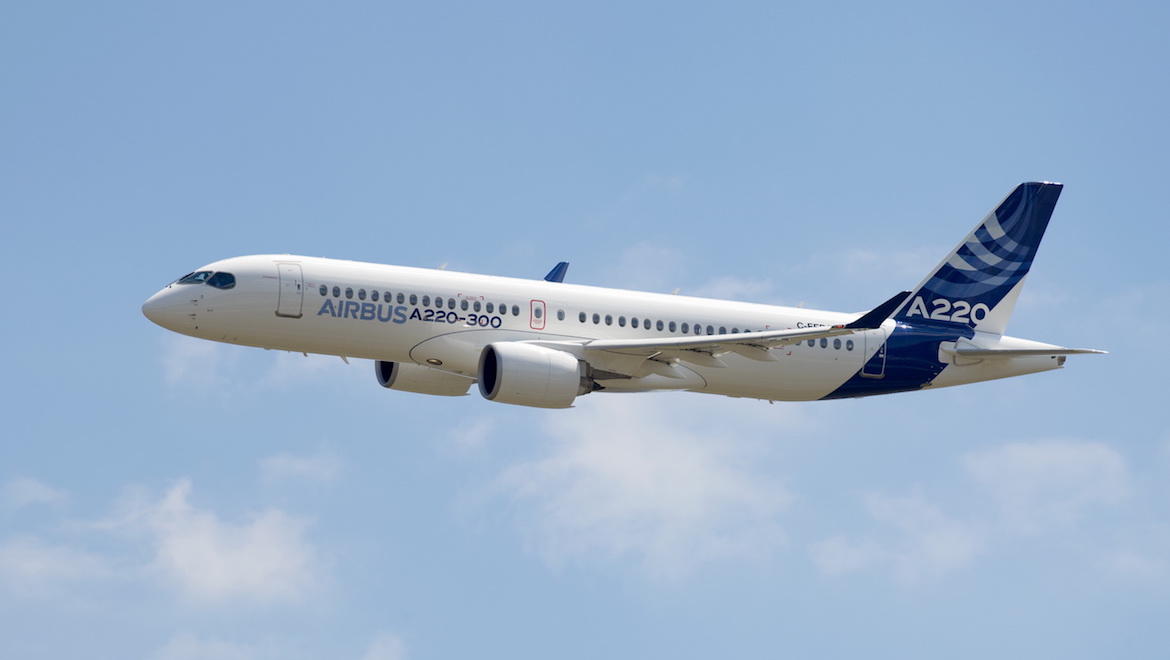
In 2016, Airbus’ former chief operating officer for customers John Leahy called the Bombardier C Series “a cute little airplane”. The aircraft, which fits somewhere in a category between large regional jet and small airliner, is indeed “little” as far as Airbus is concerned.
But its substantial composite structural materials, latest-generation aerodynamics, brand new flightdeck and strong passenger experience selling points – wide seats, large windows and huge bins for any narrowbody, let alone in its class – proved eventually more popular than the Airbus A319neo, the aircraft with which it was being compared when Leahy gave the now-infamous quote.
Fast-forward three years and the C Series is the A220, belongs to Airbus, and dozens of the aircraft have been delivered. The questions around the next-generation A220 have moved from “is there a future?” to “what is the future?”
Bombardier, meanwhile, is rapidly drawing down its commercial aerospace business, and the C Series Aircraft Limited Partnership entity that owns the A220 becomes Airbus Canada on June 1. With this new name, and at a turning point for the aircraft, Australian Aviation sat down with Rob Dewar, head of engineering and customer support at the CSALP — the airframer will be referred to herein as “Airbus” — to discuss its entry into service, initial operation and the prospects in future for the A220.
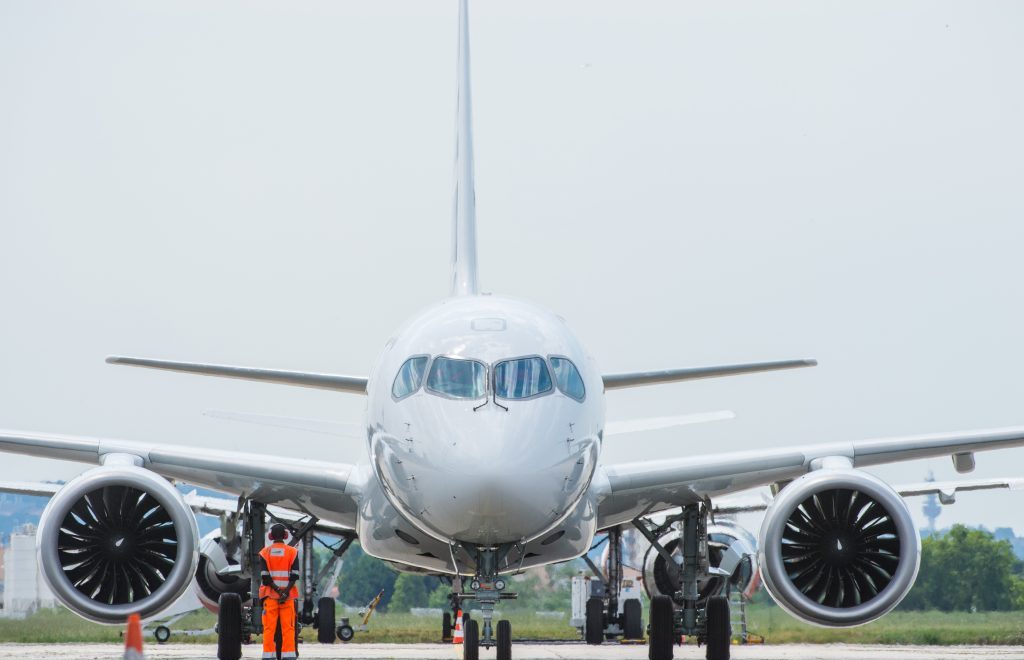
With 65 aircraft in service and over 500 orders, the A220 is finally taking off
“We have 65 aircraft delivered as of the end of March in service, with five airlines flying in basically five different regions,” Dewar explains as he outlines the current operations of each customer: alphabetically, Air Tanzania, airBaltic, Delta Air Lines, Korean Air, and Swiss.
“We have Swiss, of course, now operating out of two sites. We have the -100s flying out of Zurich, and the -300s flying out of Geneva, working well for them. In particular, London City is extremely successful for them as they increase the seating capacity by approximately 25 seats and they have roughly double the range than you had before. That’s a great route for them, both from passenger feedback but also for revenue, and their profits are good on that route.”
The short runway, high angle of approach, and lucrative business market at London City have proven to be a crucial niche market, with numerous airlines operating previous-generation aircraft such as the BAe 146/Avro RJ, Embraer E190, and British Airways using the double-shrunk Airbus A318 for direct (but not nonstop on the westbound) all-business class flights to New York.
Meanwhile, in Latvia, “airBaltic’s fleet is growing, and I would say the key thing for them is they’re ramping up their fleet: they’ve announced publicly they’re going to an all A220 fleet, which is a big vote of confidence on their side, to be on a single type, which of course brings a lot of efficiencies, but also you have to be sure that you’re satisfied with the platform,” Dewar notes.
“They continue to increase on their routes and their range. The longest route they do is the Abu Dhabi route, six and a half hours, but they have a number of other long-range routes that they’re running, as well.”
Destinations at the edge of service from airBaltic’s Riga hub include Almaty in Kazakhstan, Tel Aviv in Israel, Larnaca in Cyprus, Athens and Rhodes in Greece, Malta, Catania in Italy, Lisbon in Portugal and Spanish destinations including Barcelona, Madrid, Malaga, and Palma de Mallorca, all blocked at between four and six hours.

“We also delivered to Delta earlier last year, and they have a good ramp up,” Dewar says: “Ten aircraft in service, and they’re expanding the routes throughout different locations in the US. They’ve had very positive feedback from their customers.
Dewar highlights Delta’s cabins, including a US domestic first class (the equivalent of shorthaul business class internationally) section configured in a 2-2 layout, as a particular positive, including the streaming inflight entertainment system that also streams to wireless screens at every seat.
“We have also Air Tanzania in service, with two aircraft. Small fleet, of course, but it’s great to have the aircraft introduced into Africa,” a region where the A220 may find particular success. “In the cabin on their side we installed line-fit Panasonic system with eXconnect.”
Emerging markets such as Tanzania are proving an interesting challenge for aircraft like the A220 and Embraer’s re-engined E2 family, where the speed of jets and efficiency of new smaller airliners are combining to create small initial orders, although the lifecycle of airlines is a perennial risk.
Korean Air, meanwhile, has taken its full complement of 10 aircraft. “They have very high reliability, exceptionally high. They’re doing a great job with the aircraft. For them we got the ETOPS certification last year end of the year, which is 180 minutes. Their plan is, once they get local approvals, they’ll start doing international routes based out of Seoul.”
VIDEO: A closer look at the Airbus A220 from the Airbus YouTube channel.
Airbus sees the Asia Pacific region as a strong market for the A220
The size, performance, economics and passenger experience profile of the A220 give it a unique position in the market. Competing E-Jet and E2 models from Embraer are significantly smaller, while the Boeing 737 is less comfortable and faces issues beyond the trust in its manufacturer created by the grounding of the 737 MAX: its lower ground position means that it faces issues from lower thrust to weight performance to increased ingestion of foreign object débris (FOD) at rural or remote airfields.
“The A220 is really of interest because of its flexibility,” Dewar says. “The -100 has exceptional takeoff field performance and range, so can do very long, thin routes. So can the -300 provided the takeoff is more, let’s say, standard. The complementary (nature) of the two products in the family creates a lot of potential.“
Airbus sees that potential in smaller capacity mainline operations, in island service, in the fly-in/fly-out markets, and on long and thin routes, all of which the Asia-Pacific region, and in particular Australia, New Zealand and the southwest Pacific, have in spades.
Crucially for the region, says Dewar, “the key thing is that for startup routes or long, thin routes which currently aren’t served properly today, can be served very properly by acquiring the A220.”
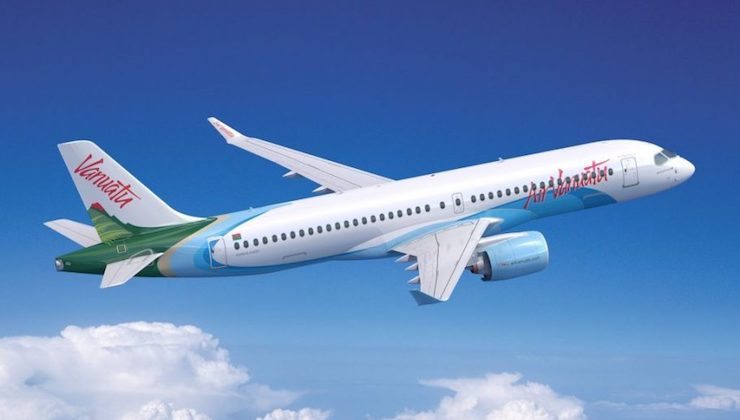
Despite having underwing-mounted engines, the A220 has substantial promise for operations to rural and remote airfields where FOD is a greater issue than at regular commercial airports, largely thanks to the position and size of its engines.
“Our engine is higher than others because we designed the aircraft to integrate it with the GTF’s [Pratt & Whitney PW1500G, formerly branded as the Geared Turbo Fan] size,” Dewar explains. “The pressure ratio across the fan, meaning its suction ability, is actually half that of a normal aircraft, so you’re much less susceptible to pulling FOD off the runway. And the core is very high up, relatively, so you have two effects that are complementary.”
Airbus also believes that the aircraft’s relatively generous Aircraft Classification Number is a positive for accessing remote runways, and although it has yet to receive customer requests for gravel-kitting the A220, the airframer remains open to do so if needed by operators.
With the number of aging aircraft in the market between larger regional jet and small airliner operating within the Australia-Pacific region, such as the BAe 146/Avro RJ, Fokker 100 and so on, Airbus believes that the A220 makes a strong case as their successor type.
Indeed, the Fokker 100 was one of the aircraft the then C Series was designed to replace, Dewar says, “but really it does much more than what the Fokker 100 did. It was a great aircraft – and it also had a very good cabin. It was a very low weight aircraft; it had, at the time, low operating expenses. But really it was limited on range, payload range, compared to the A220. On the takeoff and field performance we have far more competitive numbers than the Fokker.”
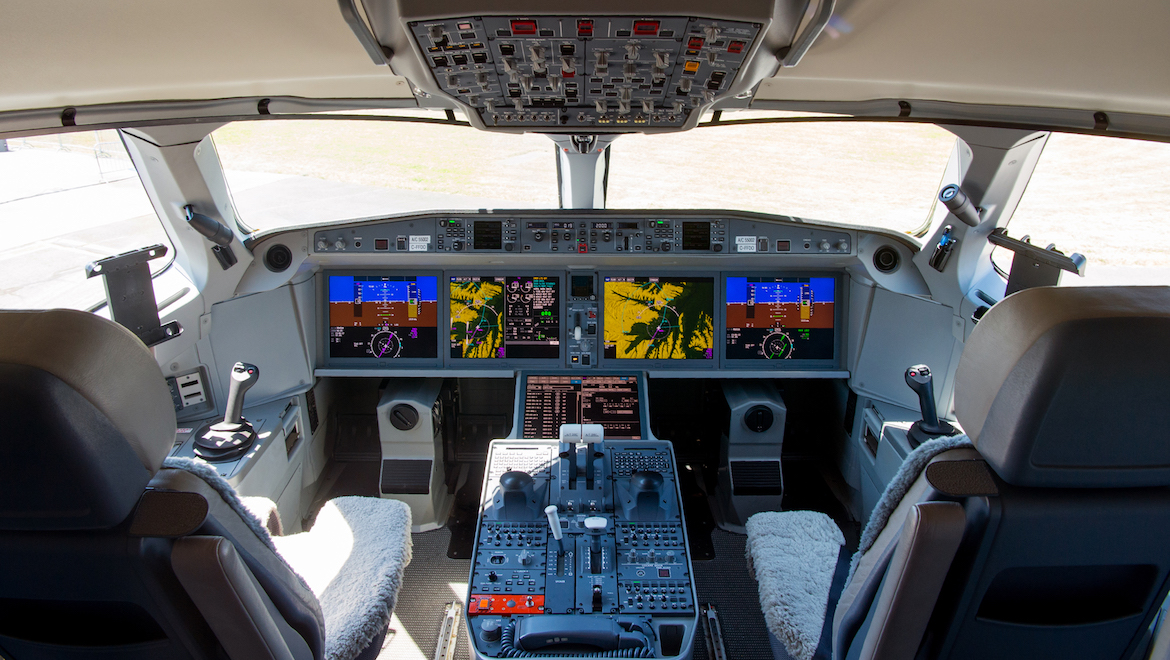
The A220 is, Dewar suggests, “A Fokker-plus-plus”.
Yet the only regional order so far has come from Air Vanuatu, for two A220-100 and two -300 aircraft, earlier this year. At the time, Air Vanuatu chief executive officer Derek Nice highlighted that the airline was “proud to be the launch airline in the South Pacific of the best-in-class Airbus A220. These aircraft will be deployed to operate on our current domestic and international routes, including our newly announced nonstop Melbourne-Vanuatu service, and will bolster plans to expand our network in the South Pacific”.
Nevertheless, says Airbus’s Rob Dewar, “we believe that the probability of getting the A220 into the region is extremely high. We think it’s very well suited for that market, with fantastic operating costs. It has the payload range that could really serve… no aircraft historically has been able to do everything the A220 can offer to that market segment.”
Production ramp up in Mirabel and Mobile will serve global and US customers
As the A220 matures in production, Airbus is looking to ramp up the production both at the original Bombardier facilities in Mirabel near Montréal, and at the Airbus facility in Mobile, Alabama, where A320 family production already takes place. A220s for US customers including Delta, jetBlue and the unnamed airline generally referred to as “Moxy”, announced by jetBlue founder David Neeleman, will be produced at Mobile, although some early structure work for all aircraft will be done at Mirabel and elsewhere.
Construction began at the A220 manufacturing facility in Mobile this January, destined to “satisfy the strong and growing US demand for the A220 aircraft”, Airbus said at the time, and “will facilitate assembly of A220-100 and A220-300 aircraft for US customers. Aircraft production is planned to begin in Q3 2019, with first delivery of a Mobile-assembled A220 scheduled for 2020. The new A220 production facilities will be complete by next year”.
In terms of Mirabel production, Dewar says, “last year we delivered 33 aircraft, and this year we’re on track to deliver 45. The production rate full capacity here, as we said publicly before, is 10 aircraft a month, so 120 aircraft per year. We continue to ramp up the program, and that’ll happen before roughly mid-2024, mid-2025 timeline. That’s based on the demand.”

Meanwhile, in Mobile, “the initial estimates we have actually committed to is essentially four aircraft per month, so basically 48 aircraft per year. And again, that’s going to take roughly the same time period, about five years, to get to full ramp rate. We’re going to ramp both sites, so essentially going up to 14 aircraft a month: 10 in Mirabel and four in Mobile, so 14 per month total capacity.”
That rate should clear the current backlog in just over five years, with Mobile production extending slightly longer than the current run-rate in Mirabel.
But the bottom line, Dewar says, is that “we have a very healthy backlog, and in particular we have a very large number of campaigns that are ongoing. So honestly, our challenge really is managing the ramp up. We’re working very closely with suppliers, and Airbus has been very helpful with all their experience and very high production rate production lines, to help us really manage – with all the lessons learned, both internally at their manufacturing sites, and also with the supply chain.”
This integration into the Airbus ecosystem is, Dewar says, also going very well. At Mobile, “The first deliveries are going to Delta. We already have received the first fuselage sections here in Mirabel for that aircraft (with) initial production work here (before sending) down to Mobile. The buildings are progressing per schedule. There are two major buildings already in advanced construction. They started last year and are on track to be completed mid this year, so roughly a 12-month build schedule. The first aircraft will be assembled in existing facilities, and then starting in 2020 they’ll be shifting over to the new dedicated A220 facilities.”
In terms of the human factors, “We already have people from Mobile here in Mirabel that are going up the learning curve on the A220 production system, getting them familiar with both the digital system, because we’re a fully digital aircraft, as well as all the manufacturing process and building up the knowledge they need to start the production in Mobile,” Dewar says.

As Bombardier moves away from commercial, the A220 integrates further into Airbus
As the A220 takes off, Bombardier is looking to reorganise as it reduces its commercial aviation footprint with the departure of the former C Series to Airbus and the Q400, previously de Havilland Canada Dash 8, to Longview. In early May Bombardier announced it will “consolidate its aerospace assets into a single, streamlined, and fully integrated Bombardier Aviation business unit”. As it looks to “optimise its global manufacturing footprint, Bombardier will pursue the divestiture of the Belfast and Morocco aerostructures businesses.”
Bombardier Aviation, said Alain Bellemare, president and chief executive officer of parent group, Bombardier Inc, “is the right next step in our transformation. The consolidation will simplify and better focus our organisation on our leading brands, Global, Challenger, Learjet and the CRJ. It will also allow us to better support our customers and generate value for shareholders.”
“With our clear vision for the future of Bombardier Aviation, we will focus our aerostructures activities around our core capabilities in Montréal, Mexico and our newly acquired Global 7500 wing operations in Texas,” Bellemare noted. “Collectively, these facilities provide Bombardier with all the skills, technologies and capabilities to design, produce and service the current and next generation of aircraft.”

With Airbus taking the majority interest in the C Series Aircraft Limited Partnership, the vehicle by which the aircraft moved from Bombardier to Airbus and became the A220, the CSALP itself is also changing: to Airbus Canada as of 1 June.
“The new name is the logical next step after the aircraft was rebranded as the Airbus A220 on July 10 2018, further strengthening customer confidence in the A220 as a full member of the Airbus aircraft family. It is therefore natural that our new name better reflects our organisation as part of Airbus as well as signalling our distinct heritage and cultural identity here in Canada,” said Philippe Balducchi, chief executive officer of the entity and Airbus Head of Country, Canada.
There is, of course, overlap between the existing Airbus A320 family and the A220, particularly with the A319neo, the smallest of the neo generation of Airbus narrowbodies, and the A220-300.
But what would push an airline to choose the A220-300 over the A319neo?
“We deal with this all the time,” Dewar says wryly. “First of all, if you need an aircraft with seating capacity and your routes can handle an A320, then definitely that’s the aircraft you’ll want to buy. It’s just as simple as that.”
If not, says Dewar, and “you have, let’s say, normal airports and routes and obstacles, you would want to buy the A220-300: lowest operating cost with a fantastic cabin. If you’re operating A320s and want just a few aircraft in the class of the A319 or A220-300, you would probably select the A319neo. Why? Training, spare parts, et cetera, are all essentially complementary and high commonality. The pilot pool, of course, as well. If it’s a larger fleet, let’s say in the order of 20-25 aircraft, even if you have A320s, then you could consider definitely to select the A220-300.”

Hot and high airports, where the current generation A319neo has been something of a lower capacity replacement for the Boeing 757-200, are also a nudge towards the A319neo. But, in essence, the answer for most airlines seems to be around whether they have a large enough need for aircraft of the A220’s size in both -100 and -300 variants that it makes sense to add a new fleet type, or whether it makes more sense to punch down from the A320neo family to the A220-300 size with the A319neo.
One might not imagine that the commonality between the A220 and A320neo would be significant. Indeed, notes Dewar, “if you look specifically at part numbers outside of the engine family, it’s not very high. But, of course, that’s only part of the story with customers. What’s important is we have same suppliers in very many cases, so they’re dealing with the same people. And that is, from a logistics point of view and combining commercial agreements, et cetera, very powerful.”
In addition, Dewar says, “We have the same sales and marketing, the same contracts now, of course, for all the product lines. That’s very important so you get the same type of coverage. Procurement? The same procurement team dealing with suppliers. Any issues you need assistance with or support, you deal with the same people. And most importantly, in service, we’re leveraging the full network capacity and scale of the customer service from Airbus, integrating into Skywise, combining training together, parts, going to Satair, dealing with the same parts supply, the same logistics and distribution. So when you look at the commonality in the end for the full life cycle, it’s actually very powerful.”
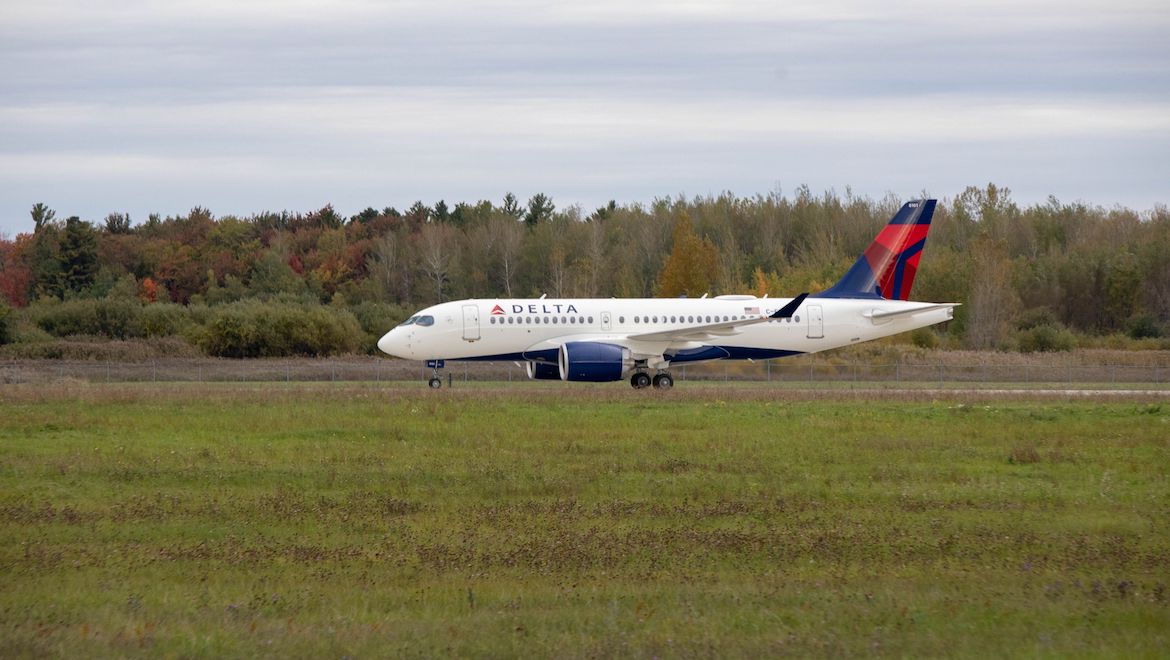
Moving from “is there a future for the C Series?” to “what does the A220’s future look like?”
With some two and a half years in service, the A220 is proving itself to be a reliable, popular and efficient aircraft.
“We’ve had some challenges along the way,” Dewar freely admits, “originally some on the engine, which was public, of course, and the availability of engines, which is really behind us now. The aircraft has performed exceptionally well. Reliability and entering the service has gone extremely well, but that comes with a lot of work and dedicated people that really go above and beyond to make sure we support and drive reliability improvement and are responsive to customers.”
“Performance is substantially better than we committed,” Dewar says, “so I would say one of the lessons learned is that we under-marketed the aircraft. We should’ve marketed more aggressively the product and been more confident.”
Airbus finds itself in a unique position at this point in time with the A220: Boeing not only unanimously lost the US International Trade Commission duty ruling, declining to appeal last March, but faces the ongoing and open-ended global grounding of its re-engined 737 MAX aircraft. Dewar declined to be drawn on the impact of the MAX’s unprecedented problems on the A220, although reports of 737 stalwart-of-stalwarts Southwest Airlines considering the former C Series continue.
One future option for Airbus is a stretch of the A220 to a -400 or -500 aircraft, sacrificing range and runway performance for capacity. That’s not yet a focus for the airframer, Dewar notes, but remains bullish on the possibility. “Honestly, the platform has the capability to do it. Really, it’s going to depend on a couple things. One is the Airbus family strategy: how does it fit into the single-aisle family? That’s probably the most important question. And in the shorter term we’re really focused on ramping up production, maturing the aircraft, and really getting the aircraft positioned globally around the world.”
With the transition to Airbus now bedding in, the view for the former C Series executive is firmly positive. “Since Airbus joined and has the majority stake in the program, it really brought a lot of credibility, confidence, and securing the platform in the future, which had honestly a very significant impact on the customer’s perception of the program,” Dewar says. “There no discussions anymore of ‘what’s the future’ or ‘what are your plans’ — that’s really all behind us.”
Now, Dewar says, the question is “how fast can you continue to make the product, continue to be competitive. Where it is very well positioned today? Airbus has the resources, both human and financial, to continue to support the program. And that’s been extremely helpful for the customers, and we’ve had that feedback very clearly from the customers: unanimously they are very satisfied with the Airbus partnership.”
With those resources from Airbus firmly focused on the A220 across the industry, including sales and marketing mockups taking pride of place at both last year’s APEX Expo and this year’s Aircraft Interiors Expo, there’s a bright future for the A220.
Not bad for a “cute little airplane”.
VIDEO: A look at the Airbus A220 in flight from the Airbus YouTube channel.
This story first appeared in the June 2019 edition of Australian Aviation. To read more stories like this, subscribe here.
















August Noto
says:Thank you John for a very good write up. I hope the Aussies and the Kiwis will start buying A220 soon.